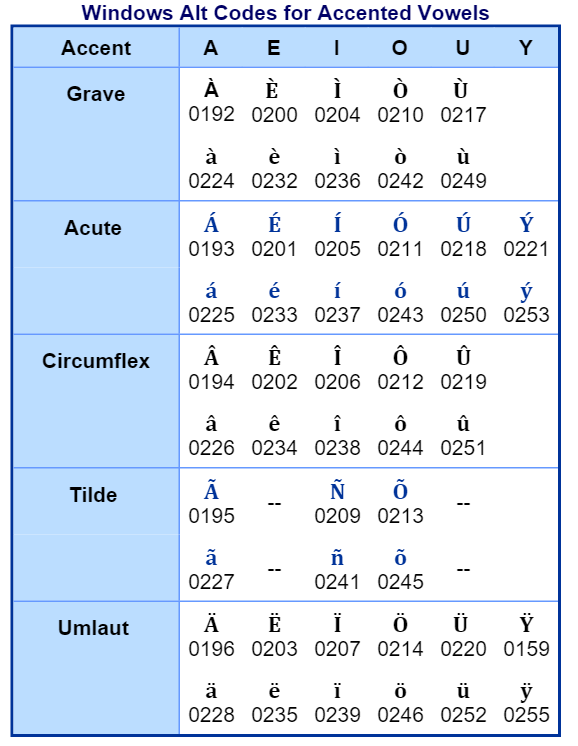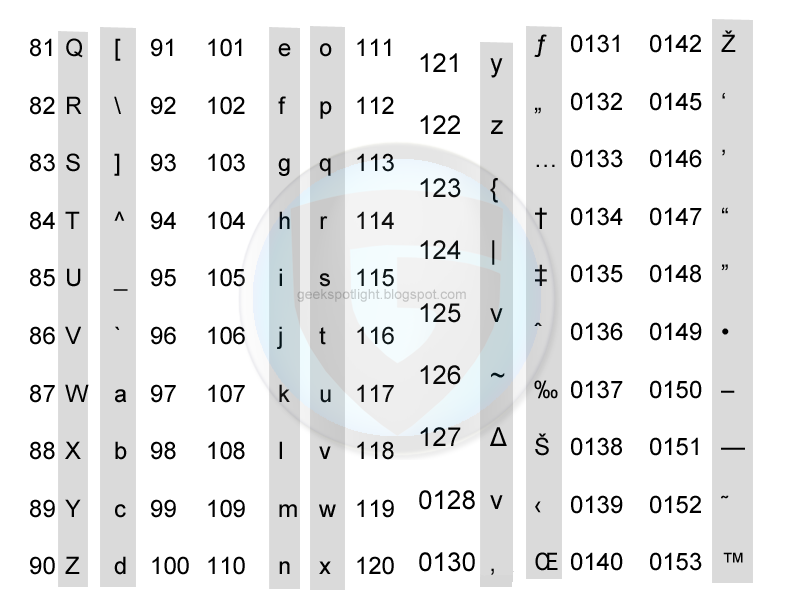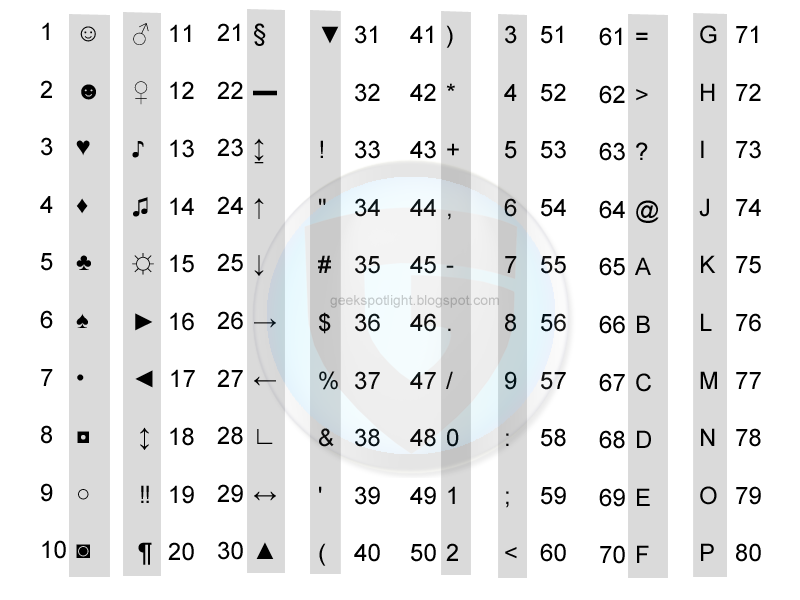
Window alt key codes code#
For instance, code point 7 is assigned to BEL. In the ASCII standard, the numbers 0-31 and 127 are assigned to control characters, but MS DOS did not interpret the numbers this way.
Window alt key codes software#
This input method is emulated by many pieces of software (such as later versions of MS-DOS and Windows) that do not use the BIOS keyboard decoding.

Window alt key codes Pc#
PC keyboards designed for non-English use included other methods of inserting these characters, such as national keyboard layouts, the AltGr key or dead keys, but the Alt key was the only method of inserting some characters and the only method that was the same on all machines, so it remained very popular. (There were, however, many more code pages for a more complete list, see code page).

A common choice in locales using variants of the Latin alphabet was CP850, which provided more Latin character variants. This causes the Alt combinations to produce different characters (as well as changing the display of any previously-entered text in the same manner). Some Eastern European, Arabic and Asian computers used other hardware code pages, and MS-DOS was able to switch between them at runtime with commands like KEYB, CHCP or MODE. In most cases typing a number greater than 255 produced the character associated with the remainder after the number is divided by 256. Some would interpret the code as a command, but often it would be interpreted as a code to be placed on the screen at the location of the cursor, thus displaying the corresponding 8-bit character from the current code page. Applications reading keystrokes from the BIOS would behave according to what action they associate with that code. It would place the corresponding code into the keyboard buffer so that it would look (almost) as if the code had been entered by a single keystroke. On IBM PC compatible personal computers from the 1980s, the BIOS allowed the user to hold down the Alt key and type a decimal number on the keypad. Lastly, release the ALT key and you'll get the infinity sign(∞) on your notepad screen.History and description MS DOS So, firstly, we have to press and hold the ALT key then type 236 using the numeric keypad. The ALT code for the infinity sign(∞) is 236. Let's try it by example to make it clear. Type the ALT Code on the numeric keypad.Make sure that the ALT key is working perfectly.Firstly, turn On the NumLock or Numpad if it's Off.After eliminating all these problems, the latest Windows machines are using the Unicode system. However, the latest systems use Unicode because the ANSI had some compatibility issues.

It's called ANSI Codes which were later changed to Windows ALT Codes.

The code which starts from "0" represents the new set of codes. After that Microsoft developed their new set of codes along with the previous one. BIOS is a process that interprets the user's action and prints the corresponding symbol at the cursor's location. The interpretation takes place in the BIOS. This whole concept was at first developed by IBM and worked on Microsoft Windows computers. Also, we have explained the step by step process in the next section. It should be typed from the numeric keypad while holding the ALT key in order to type that character. In a Windows computer, holding the ALT button on the keyboard activates a list of special characters known as ALT Codes.


 0 kommentar(er)
0 kommentar(er)
